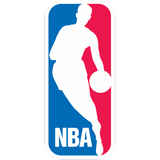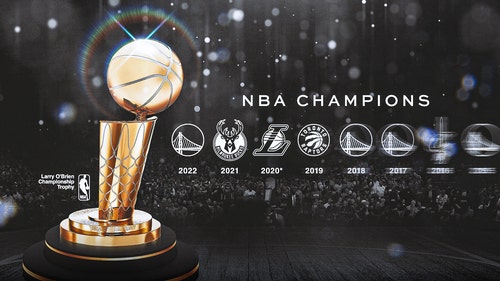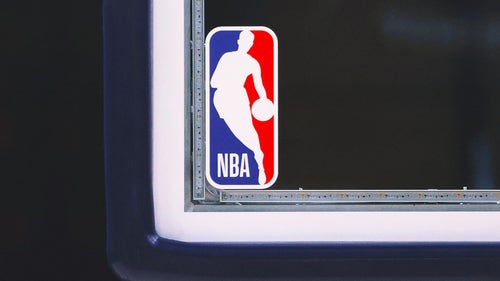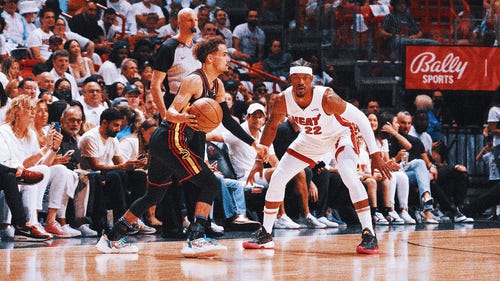
'Draft Day Sports: Pro Basketball' fills your wildest NBA fantasies

Have you ever wanted to be the general manager of an NBA team, or do you at least feel like you could do a slightly better job than some of the front office personnel we’ve seen over the years? Finally, there is a game out there for basketball purists like you to live out that dream: “Draft Day Sports: Pro Basketball.” It isn’t the best simulation game of its kind, but considering that it’s the first in the genre to really dive into the realm of NBA basketball, it makes sense that there would be some growing pains.
The game starts off with the player being thrusted into the new role as an NBA general manager for the team of their choice. Congratulation, everybody! You didn’t even have to go to college for this one. The first thing astute players will notice is the numerous amount of customization options, and it is here where DDS:PB really shines. As this is not an officially licensed game, all team names and logos are changed to something similar. However, all team names can be changed for those that want the more authentic experience, or you can create an entire league of your own design.
Want a basketball league full of teams named after Pokemon? You can do that! Want to expand and return the NBA to Seattle? You can do that, too. Teams can be moved, renamed, rebranded, or just left to their own devices as they drive themselves into the ground of irrelevance. The entire league is at your control, and you can make it whatever you want to be.
Where DDS:PB also shines is the amount of depth that is in this game. This a lot more than simple front office simulator. How much the player wants to control is decided right from the get go. The D-League, international prospects and college scouting are all here with the ability to add or take away any of these features depending on how much the player actually wants to get involved. Of course, the most hardcore NBA fans will leave all of this on and will spend their regular seasons tirelessly scouting overseas to find that perfect stashed player for next year. They’ll use the final roster spots for D-League call ups and carefully examine their second round draft choices as to figure out who might develop better in their D-League system.
The player can even go so far as to have complete and total control of the games themselves. What style the team plays is up to the player’s choosing, and then they can micro-manage from there. The entire coaching staff can be chosen by the player and obviously finding a coach that fits your goals and style is a key to success. Even if you don’t find one, the player can merely force their coach to play the team in a way they want to. If you feel that your star player isn’t getting the ball enough, you can adjust the team’s style to feed them more often or to get them more involved in the pick and roll. As GM, you can call up players to tell them they need to play in a certain way. Don’t like how much someone is iso-ing? Call them on the phone and tell them to pass more, or just coach the game yourself.
While most players will spend the majority of their time simulating games and adjusting based on the results, a major micromanager will be able to play out games. The games have little animations with jersey numbers to represent players, and has a similar look to that of those old gamecasts on ESPN. You can’t fully control the way they play — that mainly happens on the front office pages — but these mini games are a good way to get an idea of how the team plays and how you may want to adjust.
The game goes even deeper with a surprisingly robust offseason. The typical sports game has an offseason that will last 30 minutes, but this version’s can last hours with offseason interviews, draft preparation, summer league and free agency all on the agenda. This is where the real gameplay of DDS:PB takes place. While adjusting in the middle of the season and trying to form the team to play their best basketball is fun, that can only take your team so far.
Just like the actual NBA season, by the All-Star break you know what your team is and you’re just waiting until you can make the changes necessary to fix them. The majority of the regular season will be spent simulating games, adjusting by results or making up for injuries and seeing how that plays out. The offseason is when the player will truly feel like a general manger in control of their own team.
While the game definitely succeeds in giving players that feeling of what it’s like to control a team, there are definite flaws in the game. The biggest issue I — and others I have talked to — had with the game was the user interface. It’s easy to get stuck on a page or get lost without being sure of where to go to make an adjustment. Even for those that have played other simulation games like this, such as Football Manager, there’s a very steep learning curve when it comes to navigation.
The game does help you in some aspects. For example, when there’s an injury, it will inform you in a big red banner at the top. But it would have been nice to just click on that banner and immediately be taken to my injury report or rotation to make adjustments.
There’s also some more minor areas that non-simulation gamers might find confusing. One of the big aspects of this genre of games is internal chemistry and how the team functions as a whole. DDS:PB does this, and will feature moments such as players arguing amongst each other. However, there’s no visible way to see how these incidents may be having an effect on the team. I personally played through the game as the Orlando Magic, and early on I received multiple emails about Nikola Vuecvic and Evan Fournier apparently having loud discussions following losses. How these arguments are effecting the roster, play on the court, or anything at all is a total mystery. It took a lot of trial and error to discover that you can call these players up and tell them to stop arguing amongst each other.
There will also be situations where you put a player on the trading block, and the media will contact you about this player’s status among the team. Players will react to these comments in positive or negative manners, but like the arguments there’s no real way to see what effect these comments are having on the team itself — if any at all. A monitor to see team chemistry, or player morale, would have been nice but this is instead left up to the player to largely guess on their own.
There were similar difficulties when trying to figure out why certain players/lineups did better than others. In my playthrough, I made a trade for Matthew Dellavedova and Tristan Thompson after Elfrid Payton got hurt for an extended period of time. As a result, the team ripped off a winning streak that couldn’t be explained other than perhaps getting rid of Nikola Vucevic’s horrible defense. Once Payton returned from injury, the team immediately tanked back into what they were pre-trade.
The process of putting together a good team feels a lot more like trial and error than play style at points, but this could be argued as just a part of the gameplay and experience of putting together a winning team. There’s likely some hidden formulas when it comes to creating winning teams, and those that want to sink the hours needed to figure out those formulas can do so. It just makes it difficult to pick up and play this game since it’s very much a commitment.
Despite these complaints, this is still a game that any fan of simulation games or hardcore basketball fans should give a try. It’s the perfect way to create that feeling of being an NBA general manager for the common person, and the surprising amount of depth will leave you shocked at how many hours are sank in. The customization can create for some silly moments and the most creative of people will find a way to have some great fun with that.
Is this game as good as other simulation games like Football Manager? Definitely not. But it’s the best option out there when it comes to basketball, and that alone makes it worth a look.
The game can be found exclusively at the Wolverine Studios website. It is currently on sale for $19.99, and next season’s version of it should be available sometime in November.
You can ask the developer of the game, Gary Gorski, questions about the game on Twitter @Wolverinestudio or Facebook
More from Hardwood Paroxysm
This article originally appeared on












